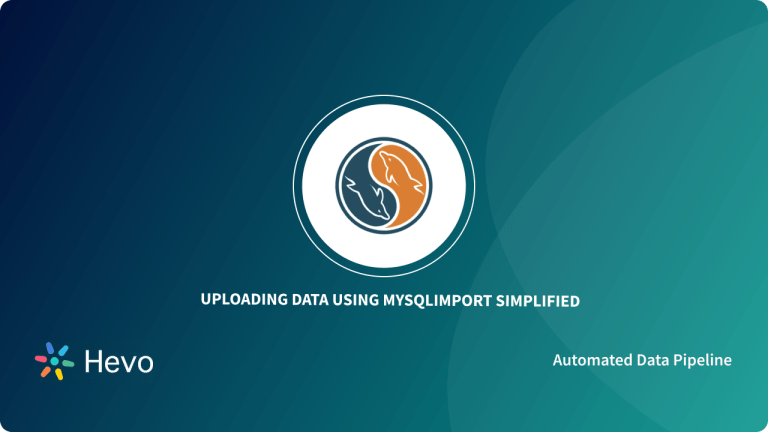Every technical aspect determines the success of a project. With the growing need to store all the data, choosing a database that successfully checks off all your storage requirements even in the long run is of utmost importance. When a Solution Architect is presented with the responsibility of choosing a database, he/she compares those databases against each other and chooses the one that fits the best.
In this blog, we will discuss the two most popular storage engines of MySQL databases: InnoDB and MyISAM. We will discuss what they are and understand MyISAM vs InnoDB by comparing them with 7 critical factors.
Table of Contents
Understanding MySQL
MySQL is a popular open-source RDBMS (Relational Database Management System)
It is widely used by academics and professionals all around the world. MySQL is available for free under the GNU public license and is also known as a premium proprietary version. Michael Widenius originally developed MySQL at MySQL AB, a Swedish-based company. In 2012, Sun Microsystems acquired MySQL AB, and later Oracle acquired Sun Microsystems.
MySQL is used for various applications and is built around SQL (Structured Query Language). It is also being used by some of the popular websites, including Twitter, Facebook, Mediawiki, YouTube and Flickr, etc.
Understanding the Key Features of MySQL
- Ease of Use: MySQL is effortless to download, install, and easy to use. You can simply go to downloads from the official website and follow the step-by-step instructions given in their documentation.
- Scalability: MySQL has a scalable architecture and provides high-performance fast-loading utilities with different memory cache.
- Compatibility: MySQL is compatible and can be installed on all modern platforms like Windows, Linux, Unix.
- Data Security: MySQL has all the features that provide security to the databases and allows only authorized users to access them.
- Low Cost: It is free to use. Anyone from around the globe can download MySQL for personal use free of cost.
Hevo’s no-code Data Pipeline enables seamless data integration from MySQL and 150+ other sources to your desired destination. With automated transformations and a fault-tolerant design, Hevo ensures that your MySQL data is ready for analysis in real-time, empowering you to focus on insights rather than data management.
Hevo’s salient features include:
- It has an easy-to-use interface; there is no need for any prior coding knowledge.
- Highly Scalable and fault-tolerant architecture.
- Transparent pricing with various tiers to choose from to meet your varied needs.
- Real-time data integration ensures that your data is always analysis-ready.
Hevo has been rated 4.7/5 on Capterra. Know more about our 2000+ customers and give us a try.
Get Started with Hevo for FreeUnderstanding MyISAM
MyISAM is the abbreviation for My Indexed Sequential Access Method; MyISAM is the default storage system and is frequently used in Web, Data warehousing and other analytics environments. The MyISAM storage engine supports all MySQL configurations.
MyISAM was a default storage engine until Dec 2009; later, InnoDB replaced the default storage engine. MyISAM is based on the ISAM algorithm that displays the result from larger datasets quicker. MyISAM has a minimal data footprint, and hence it is more suitable for data warehousing and web applications.
Understanding InnoDB
InnoDB is a transaction-safe (ACID compliant) storage engine for MySQL with features like Commit, Rollback, and crash recovery capabilities to protect user data and provide fault tolerance. InnoDB uses row-level locking, and Oracle-style consistent nonlocking on reads increases the multi-user concurrency and performance.
InnoDB stores user data in clustered indexes based on Primary keys to reducing I/O for common queries. To maintain data integrity, InnoDB also supports FOREIGN KEY referential-integrity constraints.
With the introduction to MySQL 5.5, InnoDB has been the default storage engine, and it is best suited for large datasets containing relational and structured data. InnoDB focuses more on reliability and performance, making it great for content management systems.

MyISAM vs InnoDB
Now that we have a basic understanding of MyISAM and InnoDB, let’s compare them on various factors:
1. Engine Type
MyISAM is a non-transactional storage type, and any write option needs to be rolled back manually (if needed).
InnoDB is a transaction storage type that automatically rollbacks the writes if they are not completed.
2. Locking
Locking is the mechanism in MySQL that prevents two users from modifying the duplicate rows at the same time by locking the row. The users can’t change the table when locking is enabled.
MyISAM uses the default method of table locking and allows a single session to modify the table. This means only one user at a time can alter the table. If another user tries to change the table, they will get a message saying that it is locked. The table locking method is helpful for read-only databases as it doesn’t require a lot of memory.
InnoDB uses row-level locking of the table. This method supports multiple sessions on the same row by only locking the rows in the modification process. Row-locking is helpful for databases that have multiple users.
The only disadvantage of row-level locking is that it consumes a lot of memory, and querying and modifying data takes time.
3. Foreign Keys
A foreign key is a column in one table that links the data to another table. It prevents users from adding records that destroy the link between two tables.
MyISAM doesn’t support the Foreign key option.
InnoDB supports the Foreign Key option.
4. ACID Properties
ACID stands for Atomicity, Consistency, Isolation, and Durability. MyISAM doesn’t support ACID properties whereas InnoDB supports ACID properties.
5. Performance
InnoDB supports transactional properties, i.e. rollbacks and commits, and has a higher speed of writing. The performance of InnoDB for large volumes of data is better as compared to MyISAM.
MyISAM doesn’t support transactional properties and is faster to read. As compared to InnoDB, the performance for a high volume of data is less.
6. Reliability
InnoDB uses a transactional log to log every operation and hence gives reliable operations. Thus, in case of failure, data can be recovered quickly by using those logs.
MyISAM offers no data integrity; hardware failures and canceled operations can cause data to become corrupt.
7. Caching and Indexing
InnoDB supports a large pool of buffers that caches both data and indexes. However, there is no support for a Full-text search.
The MyISAM key buffer is only meant for indexes, and a full-text search is supported in MyISAM.
Conclusion
This article listed the critical differences between InnoDB and MyISAM by comparing them against critical factors. It is important to be aware of the properties of each database because it becomes easier to make a choice. You should be aware of the similarities and differences between them. Hopefully, after reading this article, you have a better understanding of InnoDB and MyISAM.
For a broader perspective on MySQL and its alternatives, check out our guide on MySQL vs SQL Server: 10 Critical Differences.
Integrating and analyzing your data from a huge set of diverse sources can be challenging; this is where Hevo comes into the picture. Hevo is a No-code Data Pipeline and has awesome 150+ pre-built integrations that you can choose from. It will make your life easier and make data migration hassle-free. It is user-friendly, reliable, and secure. Try Hevo by signing up for a 14-day free trial and see the difference!
Frequently Asked Questions
1. Which is better, InnoDB or MyISAM?
InnoDB and MyISAM are two storage engines used by MySQL. Each has its own strengths and weaknesses, and the choice between them depends on the specific requirements of your application.
2. Is MyISAM still used?
MyISAM is still in use, but it is less commonly used for new projects compared to InnoDB.
3. What are the drawbacks of MyISAM?
a) Lacks support for transactions, which means no commit, rollback, or crash recovery capabilities.
b) Uses table-level locking, which can lead to contention and reduced performance in write-heavy environments.
c) Does not enforce referential integrity between tables, which can lead to data integrity issues.












